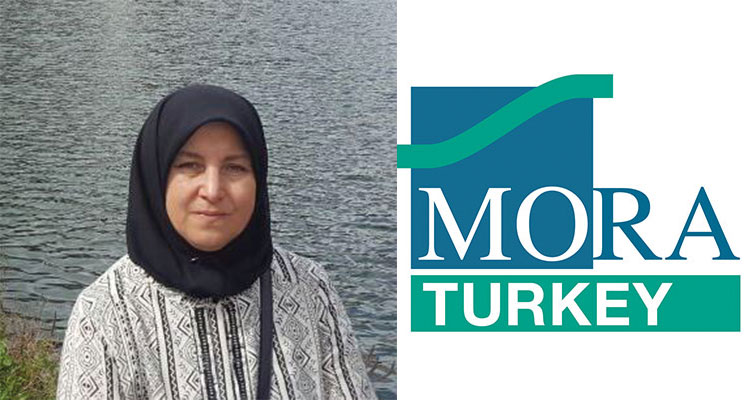
A CASE REPORT PREPARED TO PROVIDE AN EXAMPLE OF USING MORA THERAPY BEYOND ADDICTION
Dr. Sema Karadağ
Mora Bursa Smoking Cessation Center
ANAMNESIS OF THE PATIENT: Z.G.C, female, born in 1992.
Medical History: She underwent surgery in 2005 for a fatty gland and in 2008 for the diagnosis of hemangioma. After the surgery, keloids developed at the sutures on the front side of the neck.
The patient was treated for scar treatment with Mora Therapy.
19.07.2011: Basic biorhythm therapy + color therapy (on the scar with blue + purple rollers) was applied. During the session, saliva samples taken from the patient was placed in the 1st and 2nd cups, and St. John's wort oil was placed in the middle cup. It was recommended to apply it on the scar after the session.
28.07.2011: Basic biorhythm therapy + color therapy (on the scar with blue + purple rollers) was applied. During the session, saliva taken from the patient was placed in the 1st and 2nd cups, and St. John's wort oil was placed in the middle cup. It was recommended to apply it on the scar after the session.
08.08.2011 Basic biorhythm therapy + color therapy (on the scar with blue + purple rollers) was applied. During the session, saliva samples taken from the patient was placed in the 1st and 2nd cups, and St. John's wort oil was placed in the middle cup. It was recommended to apply it on the scar after the session. After the session, balancing was done with Super Tuning.
22.08.2012 Basic biorhythm therapy + color therapy (purple + pink rollers on the scar) was applied. During the session, saliva samples taken from the patient was placed in the 1st and 2nd cups, and St. John's wort oil was placed in the middle cup. It was recommended to apply it on the scar after the session.
07.09.2011 Basic biorhythm therapy + color therapy (orange + blue + green + purple rollers on the scar) was applied. During the session, saliva samples taken from the patient was placed in the 1st and 2nd cups, and St. John's wort oil was placed in the middle cup. It was recommended to apply it on the scar after the session. After the session, balancing was done with Super Tuning.
30.09.2011 Basic biorhythm therapy + color therapy (blue + purple + pink rollers on the scar) was applied. During the session, saliva samples taken from the patient was placed in the 1st and 2nd cups, and St. John's wort oil was placed in the middle cup. It was recommended to apply it on the scar after the session.
11.11.2011 Basic biorhythm therapy + color therapy (on the scar with pink rollers) was applied. During the session, saliva samples taken from the patient was placed in the 1st and 2nd cups, and St. John's wort oil was placed in the middle cup. It was recommended to apply it on the scar after the session.
27.12.2011 Basic biorhythm therapy + color therapy (on the scar with pink rollers) was applied. During the session, saliva samples taken from the patient was placed in the 1st and 2nd cups, and St. John's wort oil was placed in the middle cup. It was recommended to apply it on the scar after the session.
14.02.2012 Basic biorhythm therapy + color therapy (purple + pink rollers on the scar) was applied. During the session, saliva samples taken from the patient was placed in the 1st and 2nd cups, and St. John's wort oil was placed in the middle cup. It was recommended to apply it on the scar after the session. After the session, balancing was done with Super Tuning.
Keloid or hypertrophic scar is an important problem that can occur after the healing period of any wound. Damage to the skin after the intrauterine period in mammals results in scar formation. This response to tissue damage involves many complex events that result in tissue continuity.
Keloid and hypertrophic scars are the result of "exaggerated" wound healing following skin damage. In both cases, there is a large amount of deposition in collagen and glycoproteins. They can be difficult to distinguish, but clinically, it is common for keloids to exceed the original boundaries of the wound and regression is very rare while hypertrophic scars have a biological behavior that does not extend beyond the boundaries of the wound and can spontaneously regress over time.
ETIOLOGY
Genetic predisposition and type of trauma are the main factors that play a major role in the development of keloids. Various types of skin damage can lead to the development of keloids: Surgical intervention, ear piercing, lacerations, abrasions, tatooing, grafting, injection, insect bites, any event that results in inflammation of the skin, skin or wound tension are also critical factors in the development of keloids.
There is a relationship between keloid development and immunology. It is more common in A blood group, HLA B14, B21, BW16, BW35, DR5 phenotype. People with high serum IgE levels are more likely to develop keloids along with allergic symptoms. Endocrine factors also have an impact. Keloids often appear at puberty, increase with pregnancy, and decrease after menopause. The most important thing is to prevent these lesions.
TREATMENT
A-SURGICAL THERAPY
B-NON-SURGICAL THERAPY
In the treatment approach, it is essential to eliminate symptoms, ensure functional and cosmetic improvement and prevent recurrence. Combined treatment methods yield much more successful results.
CONCLUSION: MORA THERAPY IS CONSIDERED AS AN EFFECTIVE METHOD IN KELOID AND SCAR TREATMENT.
 English
English Turkish
Turkish